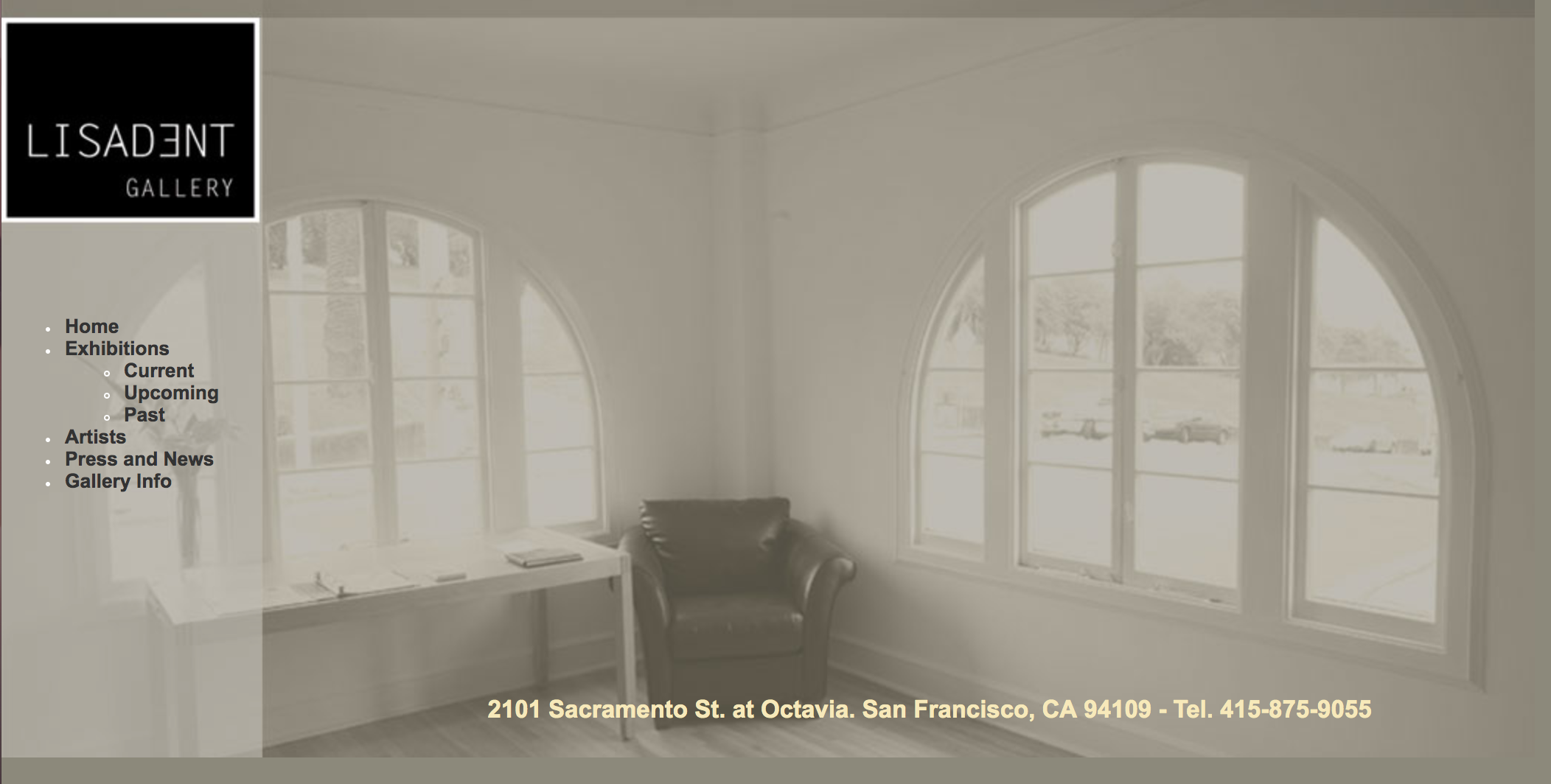Curatorial
A dynamic community of Portland arts organizations, galleries, artists, art professionals, and community business partners has joined together to realize the vision of Converge 45, an annual event of arts and ideas located in Portland, OR. As Artistic Director of the 2019-2021 iteration, Facing Between Centers, I am including artist explorations regarding cultural translation, agency and non-linguistic forms of communication. While artist networks provide engagement and support, after making careful aesthetic and technical choices, each artist creates work that emanates from multiple artistic and cultural communities. The resulting exhibitions and programs represent the diversity of a country, a region and a city.
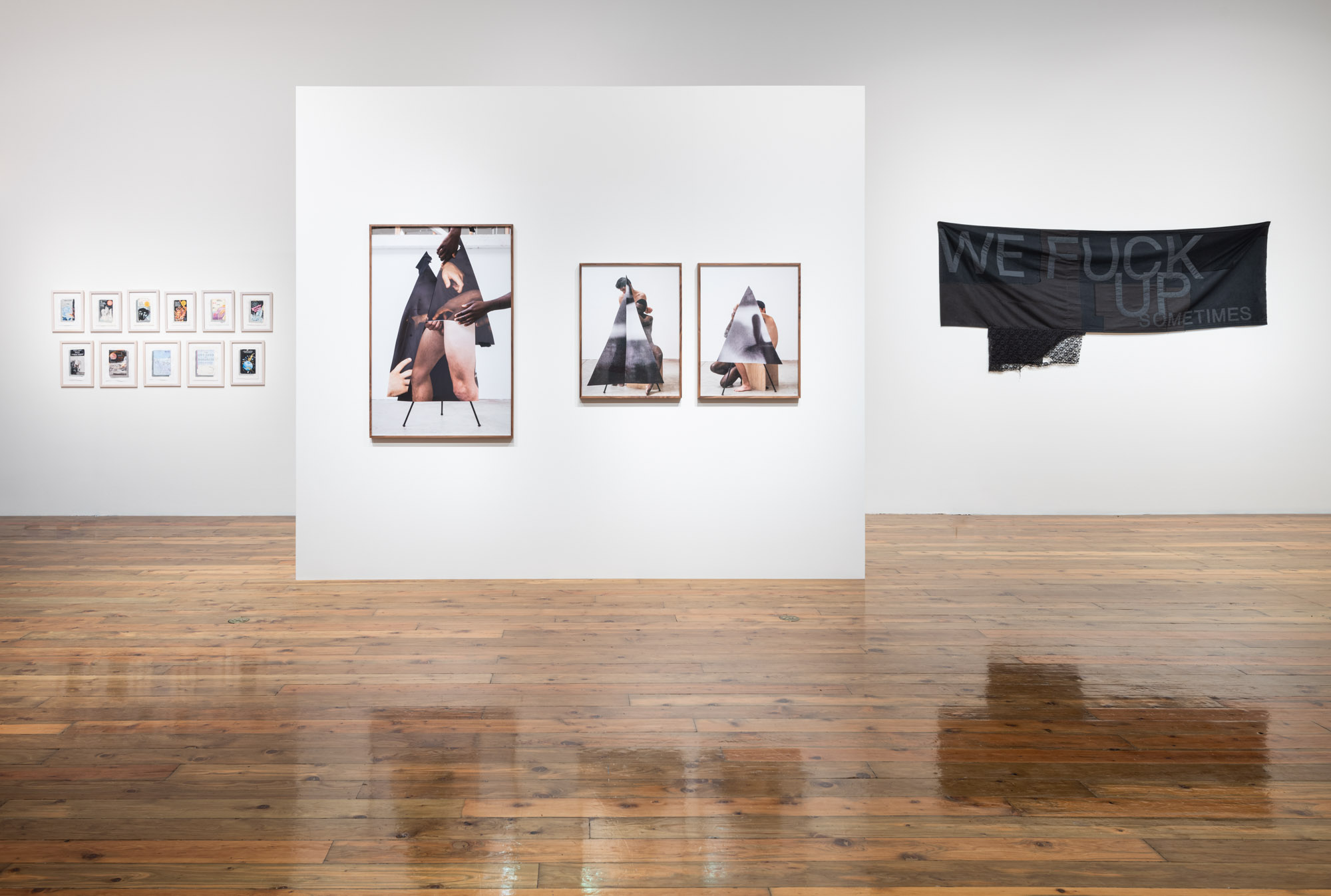
Tuesday Smilie and Paul Mpagi Sepuya in The Autopoets, co-curated with Stephanie Snyder at the Douglas F. Cooley Memorial Gallery, Reed College, August – October 2019 as part of Facing Between Centers.
Dedalus Foundation, New York
Means of Egress included explorations by artists participating in the Art and Disability Residency (ADR) of Art Beyond Sight (ABS), a non-profit organization that supports access and inclusion to the arts and culture for people living with mental health conditions or any physical or cognitive disability. Participating artists included Jordana Bernstein, Ezra Benus, Shannon Finnegan, Jerron Herman, Jeff Kasper, Kevin Quiles Bonilla, and Madison Zalopany.
The exhibition reveals the breadth of ideas and processes that emerged from the cohort, which were developed independently and collectively through weekly seminars and actions. While participation in ADR provides engagement and support structures for the artists, it also encourages the development of singular voices within the community. After making careful aesthetic and technical choices, each artist creates work that emanates from a position of power not paralysis. The resulting exhibition represents the diversity within their community.
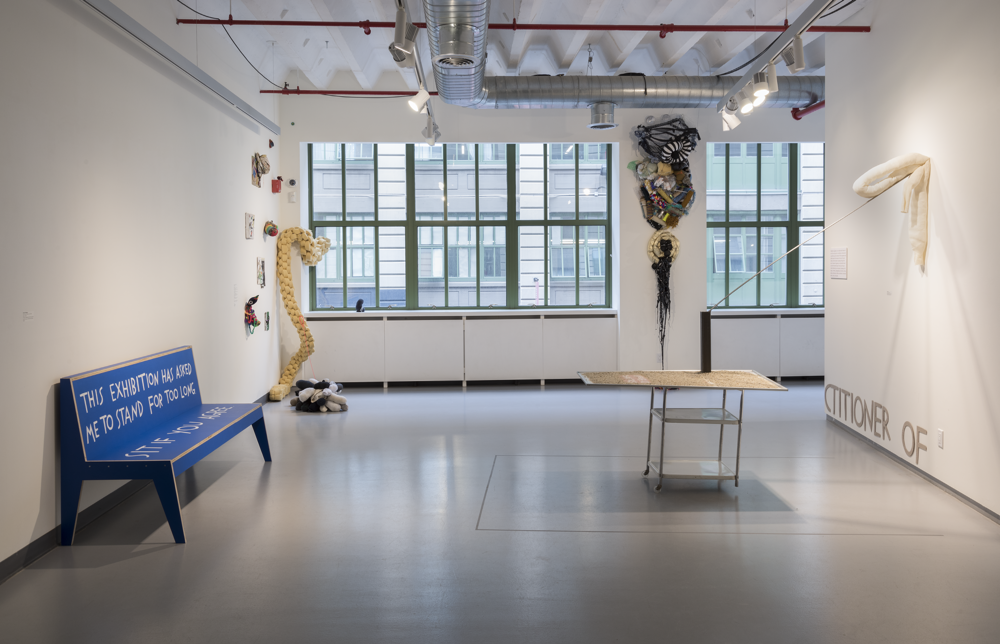
Installation view with work by Shannon Finnegan, Jordana Bernstein and Ezra Benus
Finding Time: Columbus Public Art, planned in conjunction with 200 Columbus: The Bicentennial, transformed downtown Columbus, OH into an open-air gallery in 2012 and 2013, creating memorable experiences for downtown workers, Columbus residents, and visitors.
The 12 projects of Finding Time involved the work of 50 international, national, and local artists. Individually and collectively, these projects explored the physical and philosophical measurement of time, investigating and questioning the notion of time, while making the City of Columbus aware of passing time, world time, the use of time, the measurement of time, the chronology of a life, and the notions of temporary and permanent.

Installation view of Jon Rubin’s The Time and The Temperature
After meticulous and thoughtful probing of material in the Columbus Museum’s Schiller Collection, Echakhch responded to 16 lithographs that were made in the 1930s. She took visual cues and utilized these works as springboards for her sculptural installation, painted lithographic stones hung on a wall, while two dozen tumbleweeds sat below them in the gallery and throughout the museum’s halls. Carefully culling the collection of images and corresponding artist, title and size information, Echakhch’s print choices were compelling not only in their artistic integrity but in their similarity to the social concerns of the 21st century. Mounting the stones along with icons of the American West, Echakhch created a poetic and complex view of the eroding cultural landscape.

Installation view at the Columbus Museum of Art
Stephanie Syjuco: Pattern Migration
This Currents project at the Columbus Museum of Art furthered Syjuco’s interest in issues of authorship, craft, labor, and the capitalist production process. It was inspired by the Museum’s Don and Jean Stuck Coverlet Collection of more than 300 nineteenth-century hand-woven coverlets. The foundation of CMA’s extensive textile collection, these coverlets were produced by a cottage industry of immigrants who had fled to the U.S. from the growing mechanization of the industrial revolution in Europe, settling in Ohio and other northeastern states. The peak of production for hand-woven coverlets was the relatively short period between 1820 and the end of the Civil War, by which time the weaving industry was rapidly becoming mechanized in the U.S. too. After the war, the weavers struggled to remain in business and soon succumbed to the proliferation of more expediently produced and affordable goods.
The Currents project combined the story of the coverlets with Syjuco’s recent research into the creation and use of plastic, woven, commercial shopping bags that are produced in huge numbers in plaid patterns of various colors, largely in China. These bags, which are used mostly to transport personal belongings and food, have come to be visual indicators of immigrants in communities around the world. Different countries refer to these bags colloquially as “Turkish Suitcases” (Germany), “Chinese plaid,” (US) or “Ghana must go,” (West Africa) bags.
For her Currents project, Syjuco traveled to China to oversee the manufacture of plastic fabric by commercial producers in Beijing, using several designs from the CMA coverlets instead of the familiar plaid patterns. She then designed and created a “product line” from this fabric and made objects available for purchase. The gallery space was designed as a production space and shop for the “product line” to continue to be made on site throughout the exhibition.
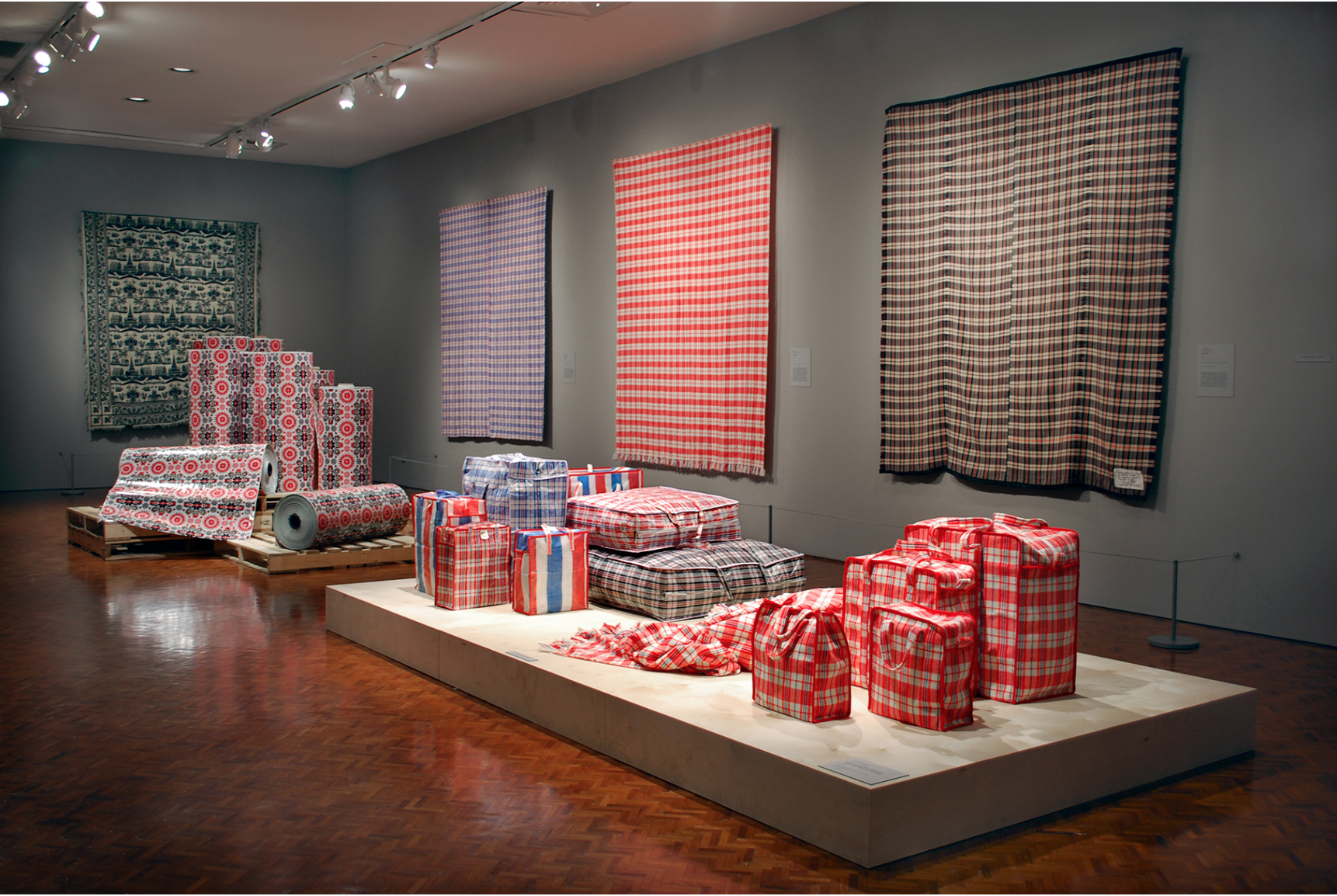
Installation view at Columbus Museum of Art
Complaints Choir Columbus – Tellervo Kalleinen and Oliver Kochta-Kalleinen
One day, artists Tellervo Kalleinen and Oliver Kochta-Kalleinen thought about how often people complain. In the Finnish vocabulary there is an expression “Valituskuoro”. It means “complaints choir” and it is used to describe situations where a lot of people are complaining simultaneously. They had an idea. What if they put together an actual choir and had people sing their complaints?
After the success of their first effort in Birmingham, England, the artists received numerous letters, asking them to initiate Complaints Choirs around the world. To meet the demand for Complaints Choirs worldwide, Kalleinen & Kochta-Kalleinen have created a web site to encourage organizations to form their own complaints choirs. I was excited to be able to facilitate a Complaints Choir for the central Ohio community.
.
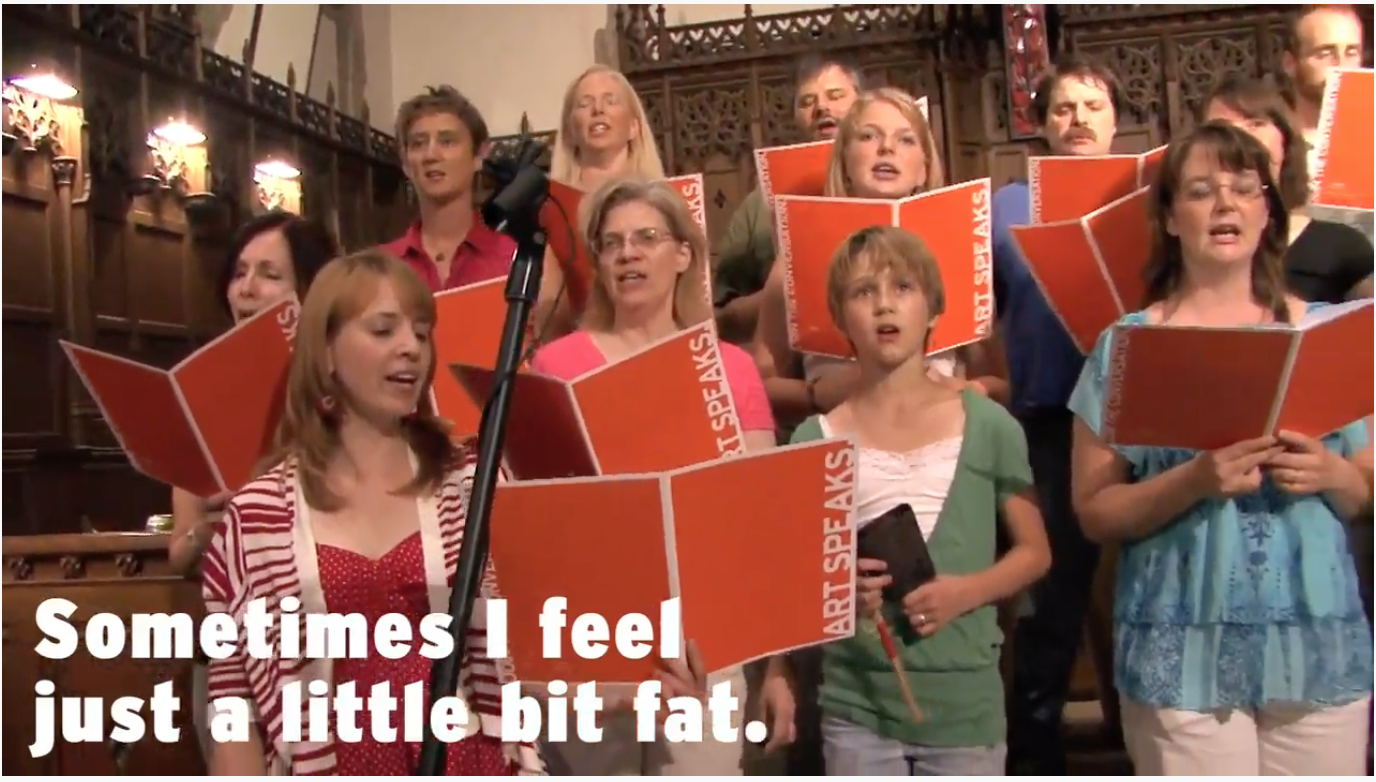
Lisa Dent Gallery
Lisa Dent Gallery was committed to providing a forum for emerging, international artists who transcended the limitations of both medium and nationality. The gallery collaborated with artists that were well educated in the demands of their particular media, and motivated by a deep, personal interest in their subject matter. While the artists displayed a type of early career energy, they also demonstrated a long-term and informed commitment to art making. Their training and experiences showed through in theoretically rigorous, often conceptually motivated, work. Above all the gallery sought excellence, both in vision and in execution and was honored to develop the careers of those artists involved in our programming.
Exhibited artists included Makoto Aida, Jon Brumit, Thomas Chang, Matthew Cusick, Ala Ebtekar, Kianga Ford, Marcia Kure, Candice Lin, Jennifer Locke, Bradley McCallum & Jacqueline Tarry, Vanessa Marsh, Flo McGarrell, Jason Middlebrook, Kambui Olujimi, Ryan Pierce, Shane Aslan Selzer, Maiko Sugano, Tim Sullivan, Basil Twist, Robin Ward, and Hank Willis Thomas.nt.
